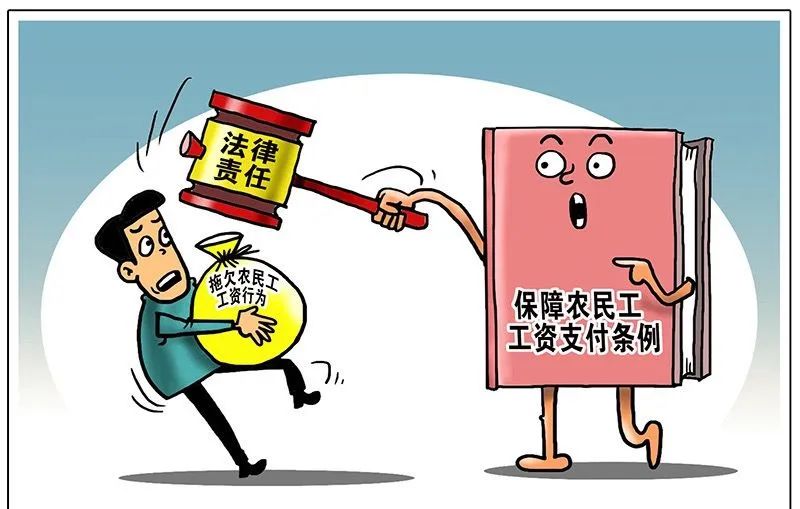Please click to read: 1
.
Nine minutes of the people’s Republic of China, judicial interpretation of the Civil Code: guarantee terms, sales contract, time effect; 2
.
Judicial interpretation of the application of guarantee terms and time effect of the civil code; 3
.
Judicial interpretation of construction project contract of the civil code (I) and reference provisions for litigation of project payment settlement How to deal with the actual constructor’s claim that the affiliated person and the affiliated person should bear the joint and several liability for the project payment in arrears? After the affiliated person undertakes the project in the name of the affiliated person, it will subcontract or subcontract the project
.
If the actual constructor claims that the affiliated person and the affiliated person should bear the joint and several liability for the project payment in arrears, it should be dealt with according to different situations: the affiliated person is in the name of the affiliated person If a subcontractor or subcontract is signed, the affiliated party and the affiliated party shall be jointly and severally liable for payment; if the affiliated party signs a subcontract or subcontract in its own name, the affiliated party shall be liable for payment
.
Preface: in the field of construction engineering, it has always been a headache for the affiliated construction unit to bear joint and several liability for the external debts of the affiliated person (Contractor)
.
Even if the previous contract between the affiliated party and the affiliated party has made a full and clear agreement on the independence and separation of the debt, based on the common legal situations such as violation of mandatory laws, invalidity of the contract, non binding of the bona fide third party, apparent agency and so on, this kind of agreement is very weak in the fight against the external debt of the affiliated party
.
However, on August 1, 2017, the higher people’s Court of Guangdong Province issued Article 22 of “solutions to difficult problems in the trial of construction project contract dispute cases by the higher people’s Court of Guangdong Province” (hereinafter referred to as “solutions”) on how to deal with the actual construction contractor’s claim that the affiliated person and the affiliated person should bear the joint and several liability for the unpaid project funds, which distinguishes different situations
.
The answer clearly stipulates that if the affiliated party signs a subcontract or subcontract in the name of the affiliated party, the affiliated party and the affiliated party shall bear joint and several liability for payment; if the affiliated party signs a subcontract or subcontract in its own name, the affiliated party shall bear the liability for payment on its own
.
In this case, the affiliated party is not bound to bear joint and several liability for such debts
.
The introduction of the above provisions provides clear legal guidance for the affiliated person to be exempted from joint and several liability, and has become a life-saving straw for the affiliated person to deal with similar contracts or cases in recent years
.
In this paper, after the “answer” issued, citing the relevant provisions of the successful exemption of the affiliated person’s joint and several liability cases are analyzed, so as to draw relevant reference conclusions, hoping to provide some practical reference for the affiliated person in dealing with similar cases
.
1、 The common situations and legal provisions of the affiliated party’s joint and several liability for the external debts of the affiliated party (1) the violation of mandatory legal provisions is invalid
.
Article 29 of the construction law of the people’s Republic of China stipulates that the contractor of the construction project must have corresponding qualifications, and the construction unit should also contract or subcontract the project to the specific construction unit with corresponding qualifications according to law If the project is sub contracted or contracted to an unqualified unit or individual, or the individual or unit is affiliated with a qualified unit, the unit shall be jointly and severally liable for the external debts of the unqualified constructors or contractors
.
Article 4 of the interpretation of the Supreme People’s Court on the application of law in the trial of construction contract disputes (2) (FA Shi [2018] No
.
20) stipulates that a unit or individual lacking qualification signs a construction contract in the name of a qualified construction enterprise, and the employer requests the lender and the borrower to compensate for the unqualified construction quality and other reasons The people’s court shall support the joint and several liability for the losses incurred
.
The above provisions are common in such cases
.
In general, the creditor of the affiliated person will invoke the above provisions, claiming that the case involves “affiliated”, “qualification lending” and other violations of mandatory legal provisions, and the affiliated person should bear joint and several liability according to law
.
The court will also cite the above provisions as the basis for the final decision when demonstrating the relevant issues
.
(2) The contract terms do not restrict the bona fide third party
.
Generally, there are similar terms in the agreement between the affiliated party and the affiliated party
.
It is clearly agreed that the affiliated party shall sign the relevant contract with the actual constructor, material supplier, equipment lessor and team members of the relevant project in its own name, and the relevant obligations and responsibilities shall also be borne by the affiliated party in its own name
.
Such terms are not necessarily legally binding on the third party (that is, the creditor of the affiliated party) outside the contract
.
Only when such third party is identified as “bona fide third party”, such terms are not legally binding on it
.
In fact, this kind of third party as the actual construction party is not necessarily unknown, and it does not necessarily belong to the legal “bona fide third party”
.
After all, if you work in a project site for a long time, you will know the relationship more or less
.
But this kind of “know” and “know” objective facts are often difficult to implement into the evidence, and are not easy to be identified as “legal facts”
.
Therefore, from the perspective of judicial practice, a large number of cases have failed to exclude the identity of “bona fide third party” of such actual construction party
.
(3) agency by estoppel Article 49 of the contract law stipulates that if the actor does not have the right of agency, exceeds the right of agency, or enters into a contract in the name of the principal after the termination of the right of agency, and the counterpart has reason to believe that the actor has the right of agency, the act of agency is effective
.
In the process of engineering construction, in order to facilitate the handling of various procedures, the affiliated person will more or less issue some identity confirmation documents to the affiliated person
.
The most common one is the power of attorney with unlimited power
.
Although such documents are not directly delivered or directed to the actual construction party, the actual construction party is likely to obtain them from various channels
.
Once there is a dispute, the actual construction party often claims that it has reason to believe that the affiliated party is the representative of the affiliated party by virtue of such documents, and the results of relevant behaviors should be borne by the affiliated party directly
.
The above three cases are the common reasons in judicial practice that the affiliated person should bear joint and several liability for the debts outside the affiliated person
.
These three situations do not exist independently, but often appear in the form of “combination boxing”
.
2、 After the introduction of the answer, Zhuhai intermediate people’s Court of Guangdong Province (hereinafter referred to as “Zhuhai intermediate people’s court”) immediately invoked the spirit of Article 22 of the answer and changed a case in which the affiliated person should bear joint and several liability
.
The specific details of the case are as follows: (1) subject and identity of the dispute, appellant / plaintiff in the first instance: Zi Dongfeng (part of the actual constructors), appellant (defendant in the first instance): Dagang company (general contractor of the project), appellee (defendant in the first instance): Hongtai company (actual construction party of the project) (2) basic fact finding: after being found out by the court of second instance, the basic fact finding is as follows: first, Dagang company The Hong Kong company has the legal qualification to undertake the project involved in the case, and it signs the contract with the employer of the project involved in the case in its own name through bidding, so it is the contractor of the project involved in the case
.
Second, Hongtai company does not have the legal qualification to undertake the project involved in the case
.
After Dagang company obtained the project involved in the case, it signed a subcontract with it, which is the actual construction person of the project involved in the case
.
Third, Zi Dongfeng signed an internal contract with Hongtai company, the actual construction party of the project, but did not get full project funds from Hongtai company
.
Fourth, Zi Dongfeng, as part of the actual constructor of the project involved in the case, has no contractual relationship with Dagang company, the contractor of the project
.
The above facts are basically the same in the first and second instance
.
(3) The focus of dispute and the spirit of the judgment of the second instance one of the focuses of dispute in this case is whether Dagang company, as the contractor of the project, should bear joint and several liability for the debts of Hongtai company to Zi Dongfeng.
.



